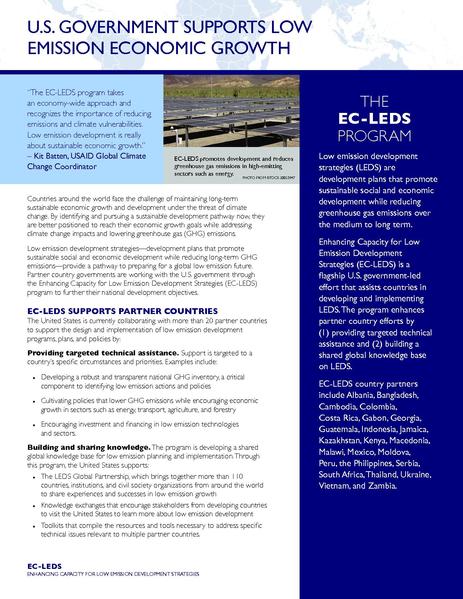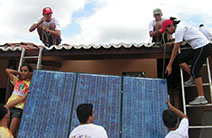- What We Do
- Agriculture and Food Security
- Democracy, Human Rights and Governance
- Economic Growth and Trade
- Education
- Ending Extreme Poverty
- Environment and Global Climate Change
- Global Climate Change
- Conserving Biodiversity and Forests
- Sustainable Urbanization for Global Progress and Security
- Securing Land Tenure and Property Rights for Stability and Prosperity
- Sustainable Land Management
- Environmental Impact Assessment
- Knowledge Management for Environment and Natural Resources
- Sustainable Tourism
- Earth Day
- Gender Equality and Women's Empowerment
- Global Health
- Water and Sanitation
- Working in Crises and Conflict
- U.S. Global Development Lab
USAID’s climate change mitigation work is helping more than two dozen countries pursue low emission growth and development via clean energy and sustainable land use. A country pursuing low emission development will grow its economy and improve the lives of its citizens, while slowing climate pollution.
Low Emission Development
Enhancing Capacity for Low Emission Development Strategies (EC-LEDS) is a flagship U.S. program that has forged partnerships with more than two dozen developing countries—from Colombia to Indonesia to South Africa to Ukraine— committed to and taking concrete actions to achieve low emission development.
Under EC-LEDS, USAID, the State Department, and other U.S. agencies work with partner countries to help develop tools and analyses to estimate GHG emissions and identify and pursue the best options for low emission growth.
This empowers countries to evaluate low emission pathways across economic sectors so they can choose the optimum path to low emission development. Visit the EC-LEDS website
Inside LEDS: Clean Energy and Sustainable Landscapes
Countries can curb emissions and pursue low emission growth and development in any sector—from energy to forests to industry to transportation. USAID provides funding for two main types of activities: clean energy and sustainable landscapes.
Clean Energy programs help countries scale up clean energy growth by building an enabling environment that will attract sustained investment in renewable energy and energy efficiency.
Sustainable Landscapes programs support land-use practices that slow, stop and reverse loss of forests and other landscapes. This provides many co-benefits, including support for local livelihoods, watersheds and biodiversity.











Comment
Make a general inquiry or suggest an improvement.